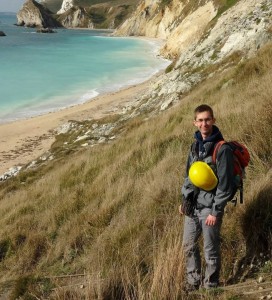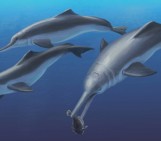 James Lewis is a PhD student at Imperial College London in the field of Planetary Geochemistry. When not blowing up gas cylinders, or hunting for jarosite, he can be found wandering the streets of London as an amateur photographer. James also suffers from Thesisitis, a common condition among third-year PhD students. He can be found on Twitter as @jmtlewis.
James Lewis is a PhD student at Imperial College London in the field of Planetary Geochemistry. When not blowing up gas cylinders, or hunting for jarosite, he can be found wandering the streets of London as an amateur photographer. James also suffers from Thesisitis, a common condition among third-year PhD students. He can be found on Twitter as @jmtlewis.
When I was applying for PhD projects two and a half years ago I found it slightly frustrating that no one could give me a definitive description of what a PhD is like. There was no single answer as to what the challenges would be or the timescale at which practical work and writing up would play out or what was expected of me. Now that I’ve just become a third year student I’ve come to realise that there’s a reason for this. A PhD project has so many variables: the nature of your supervisor; the department; lab work; field work; modelling, and so on. New postgraduate research students can’t be given a rigid road map for their entire project because generally in the space of a few weeks or months things will change so much that the original plans will be almost meaningless. If you’re just starting out with your project don’t let this scare you but embrace the fluidity of academic research. While it’s important not to stray too far from your core project aims some of the most interesting and publishable work comes about when people explore why something didn’t work or following up an unanswered question identified through reviewing the literature.
Though I’m surrounded by fellow Earth scientists our projects are so diverse that it can seem like we’re speaking different languages at times. Despite this there are some constants across our PhDs and the most important is the value of publishing. There is no better way of demonstrating your ability to manage a project from beginning to end and showing you can conduct new novel research. It’s also arguably the most effective method to communicate your work to the scientific community, and the presentations and blog posts that stem off the paper spread your message even further. The problem is that publishing is a gruelling process and when combined with the demanding life of a PhD student it can seem like too big a mountain to climb some times.
Don’t get me wrong, I love my project and I’m extremely thankful to be spending every day working on stuff that’s never been done before. If you have a passion for a subject a PhD is definitely the right thing to do. It’s important to remember that when you’re going through a difficult patch with your work that we’ve all been in similar situations. Mind maps and to do lists have frequently saved my life. If it’s been impossible to find time to draft a paper during your project sit down and get something done while you’re writing up. Papers are not the only thing you can publish; your thesis, figures, method descriptions, blog posts are all valuable to others in your field and it’s important to make them accessible.
I was recently approached by a company called Lambert Academic Publishing (LAP) asking if I would like to publish any manuscripts with them. The fact they managed to get my name in the wrong order and misspell the word science triggered my Sherlock levels of deduction and I ignored it as spam. LAP emailed me again a week later asking why I had failed to respond. This prompted me to look into their company and write this article. A quick Twitter survey with the help of Jon (he has more friends than I do [Edit: this is a lie]) revealed that four of us had been recently contacted this way by LAP. If you Google their name you get a long list of posts about their business methods so I won’t go into much detail here as the excellent blogs of Jeffrey Beall and Christopher Collins cover the essentials. Essentially, LAP offers you the chance to become published with no charge and rapid publishing rates (their peer review methods are not very transparent or perhaps existent), as well as a small royalty for every item sold. They are not the only company to do this and it almost sounds like a good deal, published work is always a good thing right? To quote Arnie, “Wrong!”
The business model of these companies is to acquire the copyright to your research and then sell it. Your research becomes hidden behind a paywall and the chance of people reading it is greatly reduced, and there’s nothing more you can do with the manuscript. One published paper that has been through rigorous and transparent peer review will be more valuable to your academic reputation than a dozen articles published through a company like LAP. Publishing this way is essentially self-publishing and does very little to raise your profile. Work that isn’t peer reviewed can still be valuable but by this I primarily mean blogging and figure sharing. Here the motivation is communication and collaboration not profit and CV filling. Services like Figshare are part of the growing movement to make data and idea sharing easier and more open. It’s also important to remember that open access doesn’t automatically equal good [Edit: Copernicus, the EGU’s publishing house, offer excellent OA options]. As well as rubbishing LAP Jeffrey Beall also spends his time hunting out disreputable open access publishers, you can see the regularly updated list here (http://scholarlyoa.com/publishers/). This all seems a bit unnerving but the key thing is not to panic and rush into a commitment that doesn’t benefit you as a researcher.
My post has two main messages, firstly before you publish think about how it’s going to affect your academic reputation. Will it show that you can do quality research, will it foster ideas and will it be accessible to a large number of people? Secondly people know that PhDs are hard, don’t suffer in silence, your supervisor, other students, librarians and bloggers can all give quality on advice on how to publish and who with. Thanks for reading this and to Jon and the EGU for hosting it.
Have you ever had an encounter with dodgy publishers? Let us know in the comments.



Mike Taylor
I’ll just leave this here …
http://svpow.com/2013/04/09/tutorial-23-how-to-avoid-giving-your-work-to-a-predatory-open-access-publisher/
Thread
You can’t have my copyright.
Jon Tennant
http://www.youtube.com/watch?v=GMIY_4t-DR0 – seems an appropriate response 🙂